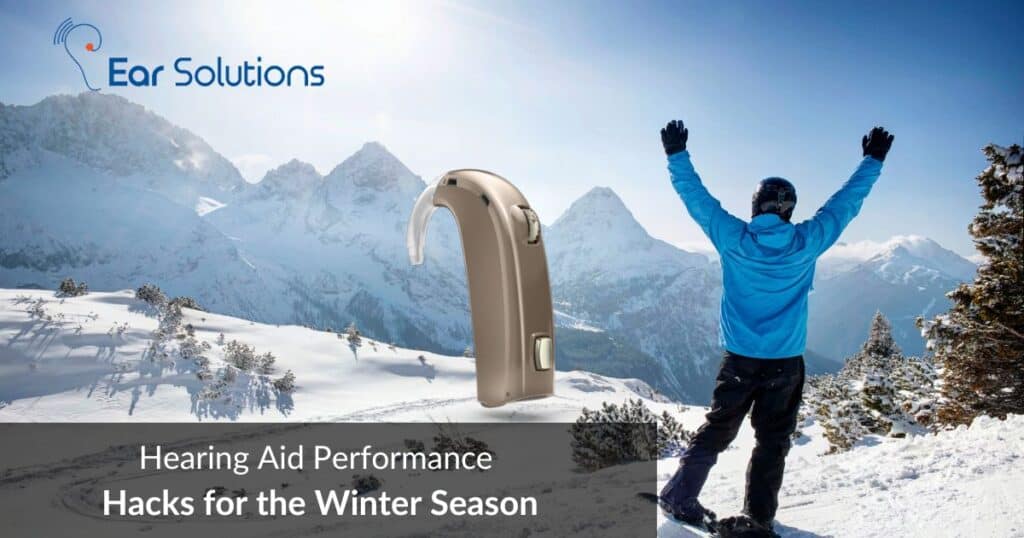Winter brings unique challenges for hearing aid users, from condensation and battery issues to comfort concerns in cold weather. However, with proper care and a few performance hacks, you can ensure your hearing aids function optimally throughout the season. This guide offers actionable tips to help you protect your devices and maintain clear, uninterrupted sound quality during the chilly months.
Challenges Faced by Hearing Aid Users in Winter
Condensation and Moisture:Rapid temperature changes when moving from the cold outdoors to warm indoors can cause condensation inside hearing aids, potentially damaging internal components.
Battery Drain:Cold temperatures can shorten battery life, causing frequent replacements or recharging.
Comfort Issues:Wearing hearing aids under winter hats, scarves, or earmuffs can cause discomfort.
Reduced Sound Quality:Wind and other environmental noises can interfere with hearing aid performance.
Winter Hacks for Optimal Hearing Aid Performance
1. Protect Your Hearing Aids from Moisture
Use Hearing Aid Covers: Specialized water-resistant covers can shield your hearing devices from condensation, rain, and snow.
Dehumidifiers Are Your Best Friend: Use a hearing aid dehumidifier daily to remove any moisture that accumulates during the day.
Store Safely: When not in use, store your hearing aids in a dry, temperature-controlled case. Avoid leaving them in extremely cold or warm environments, like a car.
2. Optimize Battery Performance
Switch to Rechargeable Batteries: Rechargeable batteries are less affected by cold temperatures compared to disposable ones.
Keep Batteries Warm: If you’re using disposable batteries, store them in a warm place, such as an inside pocket, to prevent them from draining quickly.
Replace Batteries Regularly: Cold weather can cause batteries to drain faster, so keep spares handy for quick replacements.
3. Enhance Comfort During Winter Wear
Choose Compatible Accessories: Opt for lightweight hats or headbands designed to accommodate hearing aids comfortably.
Adjust Fit for Layering: Work with an audiologist at Ear Solutions to ensure your ear machines fit securely, even when worn with winter gear.
Mind the Placement: Avoid scarves or earmuffs pressing against your hearing devices, as this can cause discomfort or feedback.
4. Improve Sound Quality in Windy Conditions
Wind Noise Reduction Settings: Many modern digital hearing aids, like those from Signia or Phonak, include wind noise reduction features. Consult an audiologist to enable these settings.
Directional Microphones: Use hearing machines with directional microphones to focus on the sounds you want to hear and reduce wind interference.
Use Hearing Aid Apps: Apps paired with your hearing aids can help you make quick adjustments to volume or noise-cancellation features when outdoors.
5. Regular Maintenance is Crucial
Clean Frequently: Winter often brings increased exposure to moisture and dirt. Clean your hearing aids regularly with a soft, dry cloth to prevent buildup.
Inspect Tubing and Filters: For behind-the-ear (BTE) models, check tubing and filters for moisture or blockages caused by condensation.
Schedule a Check-Up: Visit our audiologist for a winter tune-up to ensure your hearing aids are in peak condition.
Additional Accessories for Winter Protection
Sweatbands for Hearing Aids: These bands can protect devices from moisture while keeping them warm.
Hearing Aid Clips: These prevent accidental drops when adjusting your winter gear.
Bluetooth Connectivity: Use Bluetooth-enabled hearing aids to stay connected with devices like your smartphone, so you can adjust settings without removing gloves.
Common Mistakes to Avoid in Winter
Leaving Hearing Aids Exposed: Always cover your ears when outdoors to shield devices from snow and freezing winds.
Using Wet Gloves for Adjustments: Moisture from wet gloves can damage delicate hearing aid components.
Skipping Daily Dehumidification: Regular use of a dehumidifier is essential to prevent long-term damage caused by condensation.
Why Winter Care Matters
Proper care during winter not only extends the life of your hearing aids but also ensures uninterrupted sound quality and comfort. Devices like Phonak Audeo Life, with waterproof features, or Signia Pure Charge & Go IX, with advanced noise management, are excellent choices for winter conditions. Pair these with the hacks above, and you’ll have a stress-free hearing experience throughout the colder months.
Conclusion
Winter can be challenging for hearing aid users, but these performance hacks can help you navigate the season with ease. By protecting your devices from moisture, optimizing battery performance, and making use of advanced features, you can enjoy crisp, clear hearing no matter how low the temperature drops. With proper care and regular maintenance, your hearing aid devices will remain a reliable companion all winter long.





